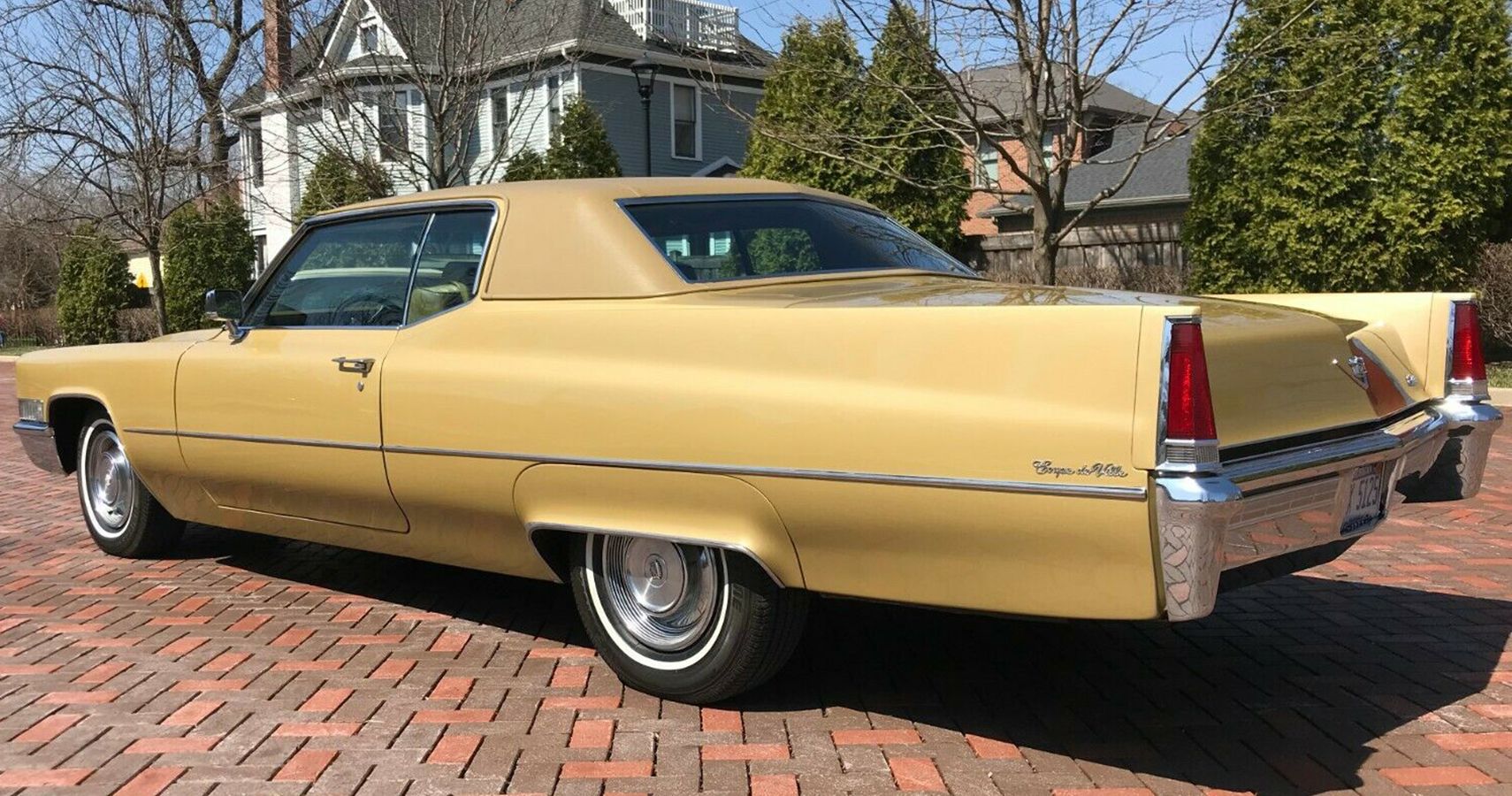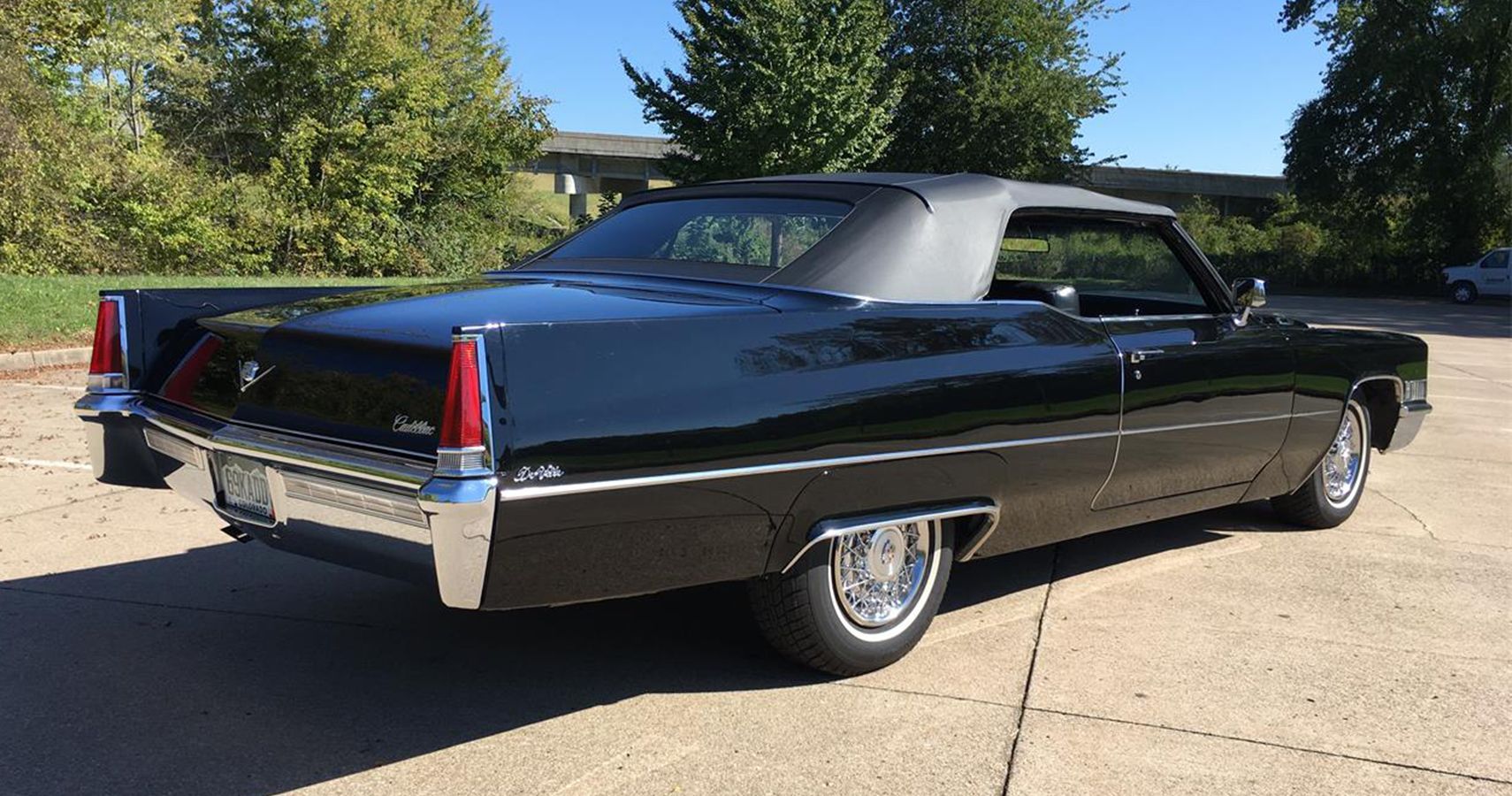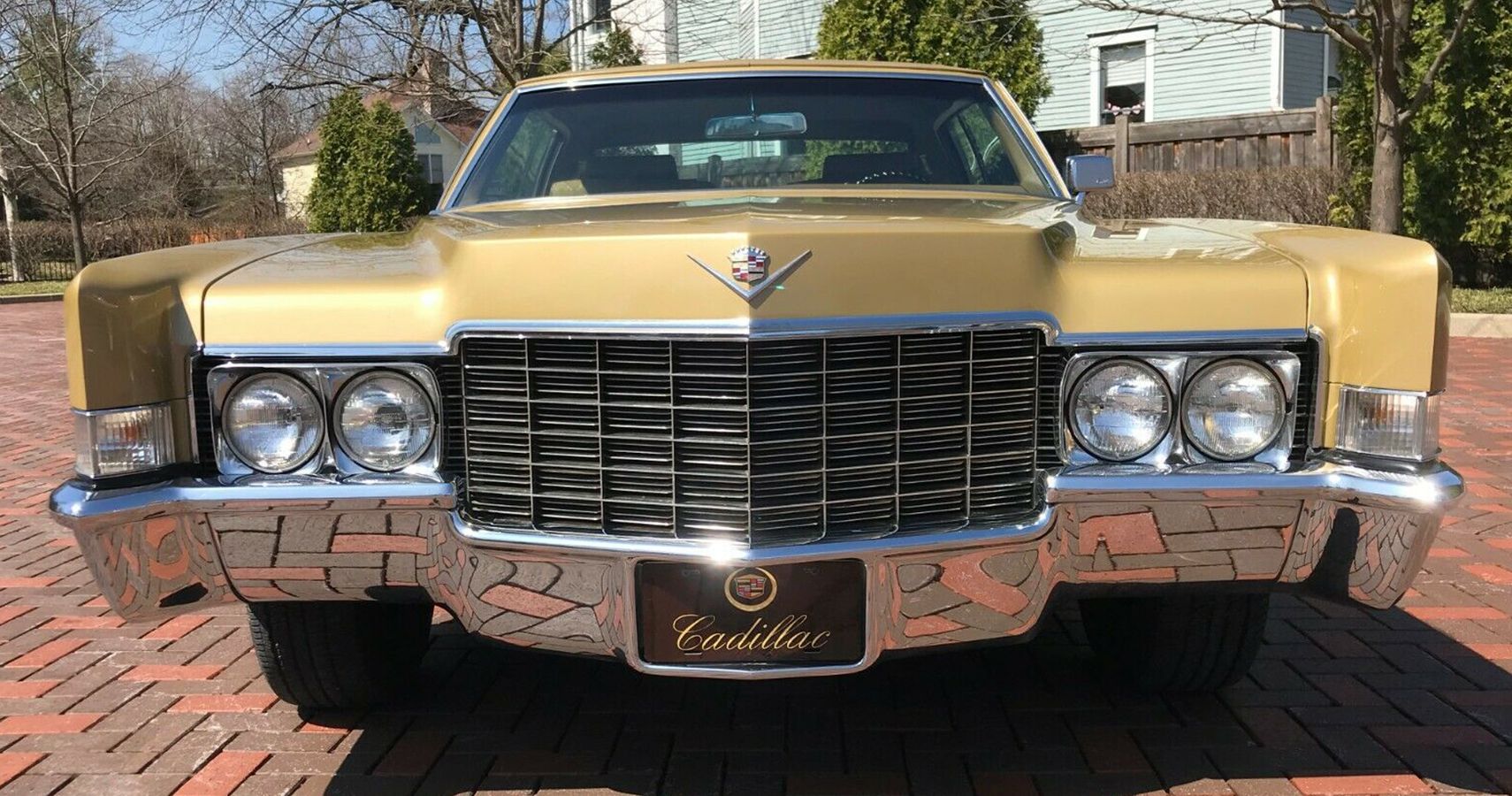Thinking of going for a classic Caddy? Congratulations, you have great taste. The Cadillacs of the past were pioneers of the automobile industry and just one of the reasons why General Motors is still thriving today. The ‘50s had been very kind to the Cadillacs, which were large, luxury-stuffed vehicles at the time, that looked more like barges than cars.
In 1964, Cadillac built its three millionth car. This was a 1965 Cadillac Fleetwood Sixty Special Brougham. The name is long, the car was even longer! In 1969, came its four millionth car. Apparently, the ‘60s were partial to Cadillac as well.
The car in question was a 1969 Cadillac Coupe De Ville that came in an Astral Blue Metallic paint and bore dark blue interiors with a matching vinyl top. Despite the popularity of the Coupe DeVille, it was mostly the hardtop version, the Sedan DeVille that was a bestseller. This changed in 1973.
That said; let’s take a look at the 1969 Coupe DeVille, how much it costs, and why it could make a perfect car for you. Let’s brush up on the history of Caddy and the Coupe DeVille.
Caddy’s Classic, Uber-Rich Legacy

The classic Caddys were different from the modern ones in one major aspect. Power. The first two gears were just like any other car but plop into the third and there was a boost to the car, almost as if every model was supercharged.
More of a pioneer at the time than a marque that simply mass-churned luxury cars preferred by the geriatrics, Cadillac innovated climate control. Cornering lamps was also something first seen in Caddys and heck, even the concept of a luxury car came from GM’s top marque.
People either loved the Cadillac or hated everything it stood for. It was a car for wealthy Americans, in fact, those who wanted to be seen as rich would also strive for a Caddy. At the time, though today it has slipped several rungs, Cadillac was the ultimate “you-have-reached” American car. These were the yachts of the road, bought by those who had money and were flamboyant enough to show it.
And with Cadillac reinventing itself in 1969, with the freshly designed Calais, Fleetwood as well as the Coupe DeVille, even the ‘70s belonged to Cadillac before the muscle car took over.
The 1969 Cadillac Coupe DeVille

The Cadillac Coupe DeVille rebranded with a capital D was announced in 1965 with a convertible and a pillared-sedan option as well. This is the car that replaced the very-successful series 62 lines, and in 1965, the Coupe DeVille and Sedan DeVille came and looked a little more conservative and a lot more refined.
In 1969, the Coupe DeVille became fancier with a redesign, based on the 1967 Fleetwood Eldorado, and became pretty long as well. Almost daft if we compare it to today’s car sizes.
Basically, it was a showboat and proclaimed luxury with its sleek lines, XL-size, and gleaming if OTT-named paint shades. It outsold every other luxury car in America for 1969, so we have to give Cadillac credit, to know what the average rich American wanted.
The top engine was a 7.7-liter V8 that made 375 horses and an astounding 525 ft-lb torque, enough to keep the driver happy with the 110 mph top speed. Any faster and this heavy car would have barrelled through a wormhole. It was a rather agile car, and while not a track-happy ride, had enough power to appease everyone. Plus, it had the biggest engine in the American market, all 7.7-liters of it.
The drive was not sporty and built more to race the wind on straight roads. With its bulk, curvy roads were not the DeVille’s forte, but then again, no one expected it to be. It was plush, luxurious and anything that could be operated with power was either part of standard equipment or made optional.
For its time, the climate control and sound system was state of the art and mind-blowing especially for someone whose idea of a car was a Roadrunner.
How Much Does A DeVille Cost Today?

More than 65,000 1969 Coupe DeVille cars were made and sold, so this is definitely not a rare classic. If you are in the market to buy one, most owners call it a bulletproof car because of the steel body. Do remember that because of that, it is prone to rust, as are most if not all cars of the ‘60s.
Considering the size and the low fuel economy, a Coupe DeVille would not work as a daily driver. But if you take it out for a spin, keep an eye out for those gasps, oohs, and definite jaw drops. The car is an absolute and extra-long stunner.
Overall, a 1969 Cadillac Coupe DeVille makes for a great if extravagant classic. It looks pricier than it is, although you ween need an extra-large garage to house one of these gargantuan rides.

